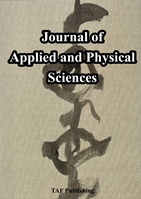
|
A. T. Mohammad, T. H. Darma, A. Barde, S. Isyaku, A. H. Umar Article first published online: 2017 Abstract
The search for p-type Transparent Conducting Oxides (TCO) has been pursued vigorously to complement current advances in n-type TCOs to develop heterojunctions for various electronic devices. One of the promising p-type TCOs is CuAlO2. Thin films of CuAlO2 were deposited on a clean glass substrate using the chemical solution deposition (sol-gel) method of deposition with CuCl and AlCl3 taken as the starting materials. CuCl was dissolved in HCl while AlCl3 in distilled water, pH value of the mixture was controlled by the addition of NaOH. The samples were annealed at different temperatures in order to determine the effect of annealing temperatures on the morphological and optical properties of the deposited CuAlO2 thin film. The surface morphology reveals an improved crystalline nature as annealing temperature increases. The UV-vis and FT-IR spectrophotometry results indicate that the absorbance for all the samples decreases sharply from a common value of about 89% at about 329nm to a range of values of 56.2%-35.2%. The extinction coefficients for all the samples decrease from 133.89 x 10-3, 111.76 x 10 -3, 93.45 x 10-3 and 89.44 x 10-3 in the infrared region to about 81.11 x 10-3, 82.22 x 10-3, 83.35 x 10-3 and 84.42 x 10-3 at about 4.05eV in the visible region. And the absorption coefficients of three samples decrease with increase in annealing temperature from 1.58 x 10-6, 1.29 x 10-6 and 1.08 x 10-6 at about 1.14eV in the infrared region to about 1.93 x 10-6, 1.58 x 10-6 and 1.29 x 10-6 at about 3.62eV in the visible region. Transmittance and band gaps vary directly with annealing temperature; the deposited films were found to be suitable in optoelectronic applications. |